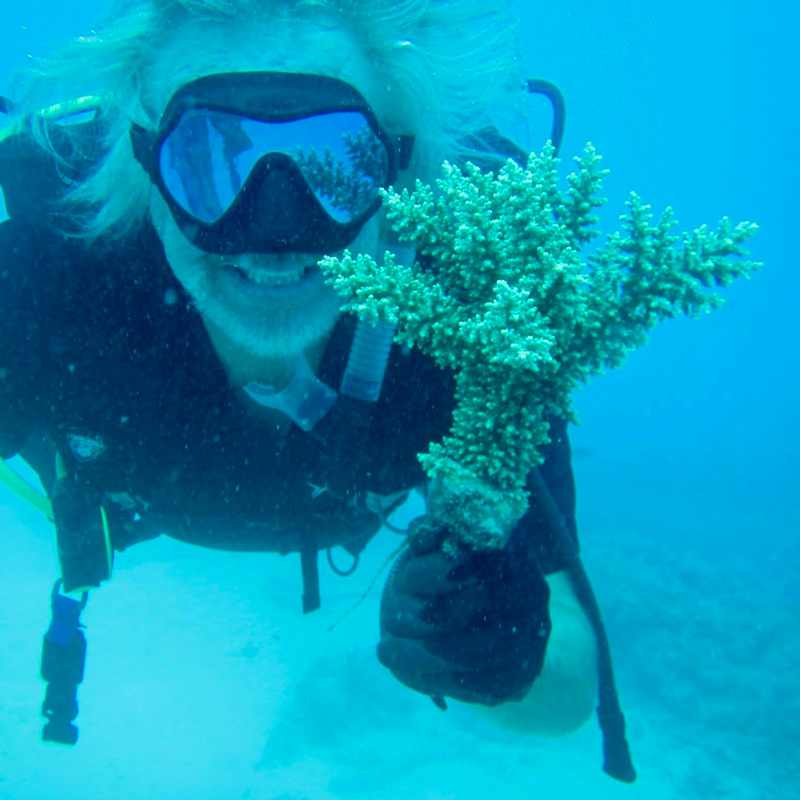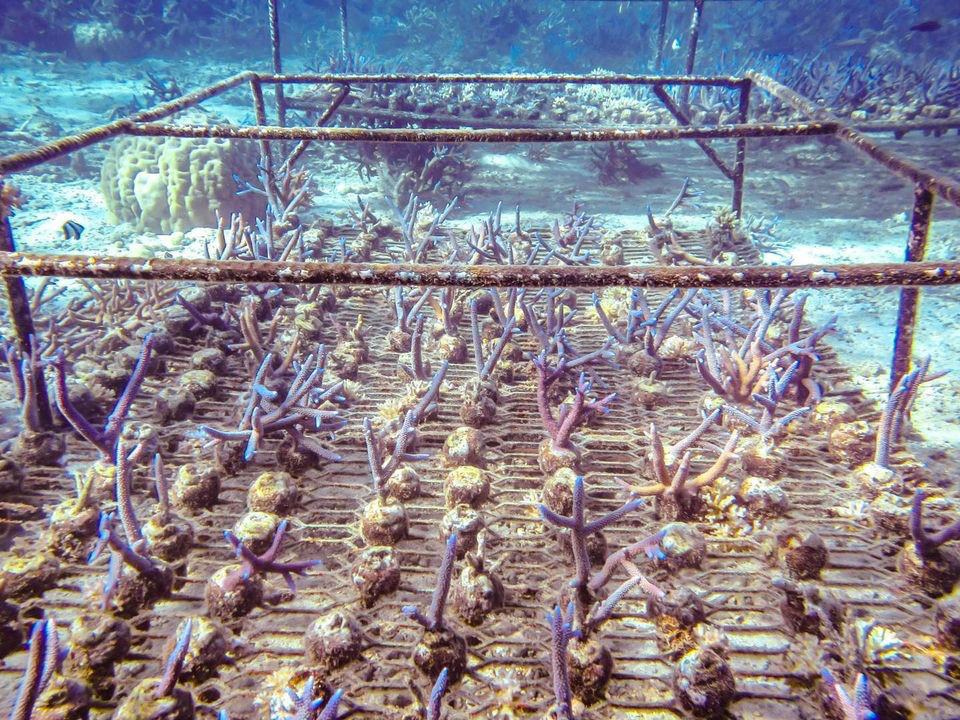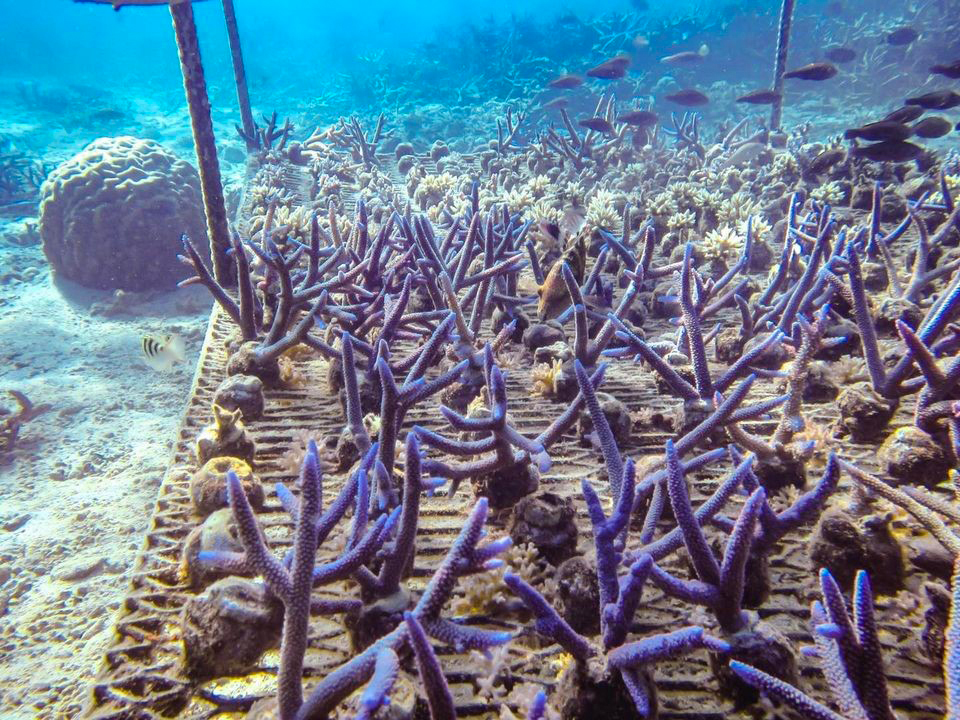We Succeed
Not only does the environment benefit from these efforts, but the local villages and resorts also benefit from adopting this program. The villages are taught a valuable skill that brings life back to the reefs and provides a sustainable income for the locals. The resorts benefit by having trained divers, certified in the ADE rehabilitation process, to restore and maintain the reefs around their resorts, ultimately creating more tourism. The tourists love to play a role in the rehabilitation of the reefs and often come back year after year to see the progress.

ADE has seen huge success rates in survival of the corals they implant through smaller capacities since 1998. Without question, the techniques employed and developed by Walt Smith’s coral farming process have become instrumental in reef rehabilitation on a global scale.
How many corals can we plant?
This video was taken (a while back) just after our team of four coral farmers worked in our Lautoka facility all morning. This shows the result of planting about 1,200 new coral clones from several donor colonies and placed them in this holding tank to stabilize before taking them out to the farm site the next day. They will all eventually be planted on the nearby reef once they show us some growth achievement.
How fast does coral grow?
We have captured images of ADE corals on growout rack at different times in it’s development. This will answer the question “how fast does your coral grow”. The three images shown below are of the same rack of coral taken over a two year period.
Two months after planting corals

Six to eight months after planting corals

Two years after planting corals
